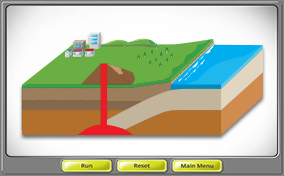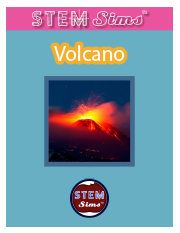What is a volcano?
A volcano is an opening on Earth’s surface where materials, such as lava, ash, and gases can escape from below the surface.
What is plate tectonics?
Plate tectonics is the creation and building of various features on the surface of Earth due to the action of the plate’s movements.
What is a plate boundary?
A plate boundary is the location where two or more tectonic plates meet.
What is a plate margin?
A plate margin is the end of a tectonic plate.
What is convection?
Convection occurs when a fluid is heated and results in a particular pattern of circulation due to density differences of the heated fluid. Warmer fluid moves to the surface, while cooler fluid sinks to the bottom.
What is a topographic map?
A topographic map shows the elevation, steepness, and the shape of a given area of land. These maps use contour lines that connect points that have an identical elevation. A contour interval is the difference in elevation between two of the nearest contour lines.
What is a hot spot?
A hot spot is a region on Earth’s surface where there is an abundant supply of magma rising up towards the surface.
What is the Ring of Fire?
The Ring of Fire is the area around the edges of the Pacific Ocean. This area is characterized by significant movement of adjoining plates. This interaction of plates creates a large number of volcanoes and earthquakes.
What are the main elements in the oceanic crust?
Oceanic crust consists of mostly iron and magnesium that make up the basaltic rock.
What are the main elements in the continental crust?
Continental crust consists mainly of granitic rock that has large amounts of silicon and aluminum.
Here are some more definitions to help you in your Grade 3-5 Lesson 1 investigation.
Contour Interval - the difference in elevation between two nearest contour lines
Contour Lines - a line connecting the points on land that have the same elevation
Elevation - the height above sea level
Increment - an increase or addition on a fixed scale
Level - ground that is very flat and does not slope up or down
Slope - an upward or downward slant of the ground
Terrain - the physical features of a piece of land
Topographic Map - a map that shows contour lines
Here are some definitions to help you in your Grade 3-5 Lesson 2 investigation.
Properties - something that is used to describe an object
Layer - a single thickness of a material
Temperature - a measure of the hotness or coldness of something
Density - a measure of the compactness of something
Thickness - the distance between opposite sides of something
Matter Phase - a way that matter exists, such as solid, liquid, or gas
Here are some definitions to help you in your Grade 3-5 Lesson 3 investigation.
Plate - one section of Earth’s lithosphere
Margin - the place where two or more sections of Earth’s lithosphere meet
Boundary - another name for a margin
Converge - to move together
Diverge - to move apart
Oceanic Crust - the solid layer right under the oceans on Earth
Continental Crust - the solid layer right under the land on Earth
Here are some definitions to help you in your Grade 3-5 Lesson 4 investigation.
Volcano - a mountain or hill that opens downward into some molten rock
Erupt - to send out lava, or rock, or ash from a volcano
Molten - a substance, usually rock that has melted
Lava - hot, melted rock above the surface of Earth
Magma - hot melted rock below the surface of Earth
Lithosphere - the solid outer layer of Earth
Convection - motion in a fluid where warmer particles rise, and cooler particles sink
Tectonic Plates - pieces of Earth’s crust and upper mantle that move and are associated with volcanoes and earthquakes
Fluid - a liquid or a gas
Temperature - a measure of the hotness or coldness of something
Thermometer - a device used to measure temperature
Solid - a phase of matter in which particles are not free to change position
Liquid - a phase of matter in which particle are free to change position
Trial - an experiment to test something
 A blast from the past. That’s a pretty good description of a volcano. The magma that erupts from a volcano is melted rock that was formed long ago, heated by the thermal energy that still exists from when the planet was formed and by nuclear reactions from radioactive materials made when Earth was created that happen deep inside Earth. In this investigation, you’ll see how volcanoes form and use some tools that scientists use to study them.
A blast from the past. That’s a pretty good description of a volcano. The magma that erupts from a volcano is melted rock that was formed long ago, heated by the thermal energy that still exists from when the planet was formed and by nuclear reactions from radioactive materials made when Earth was created that happen deep inside Earth. In this investigation, you’ll see how volcanoes form and use some tools that scientists use to study them.


